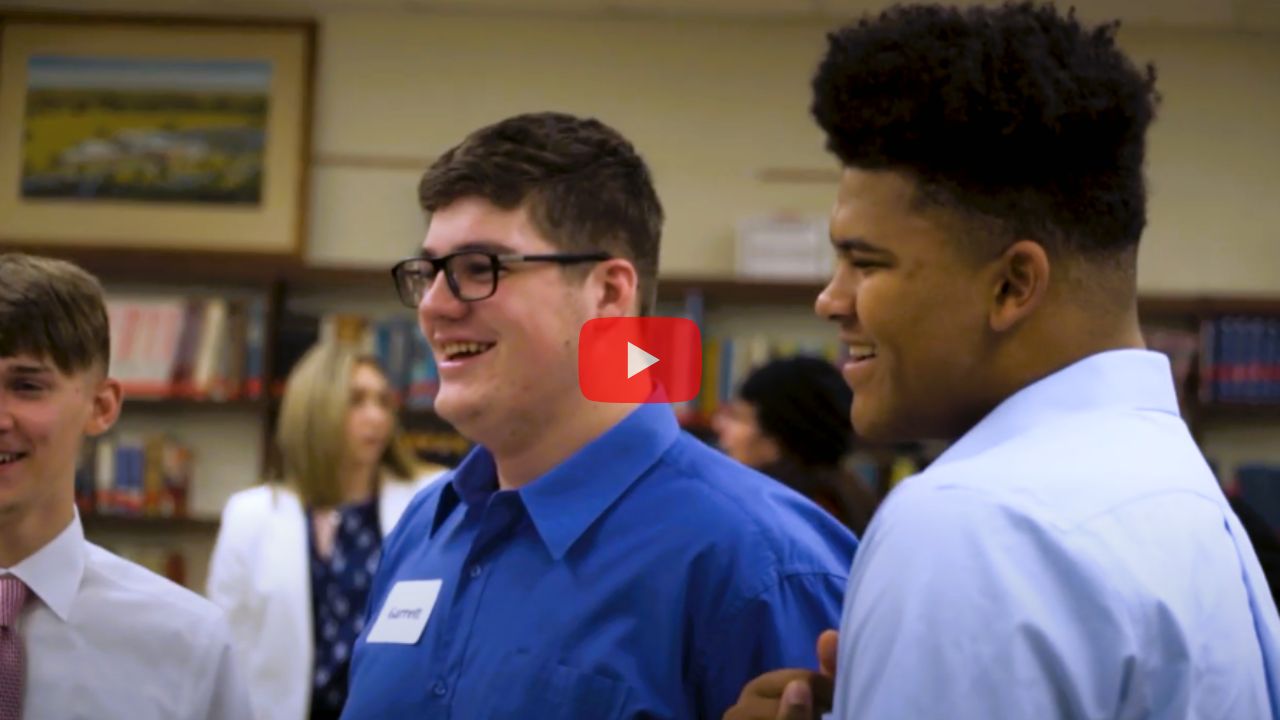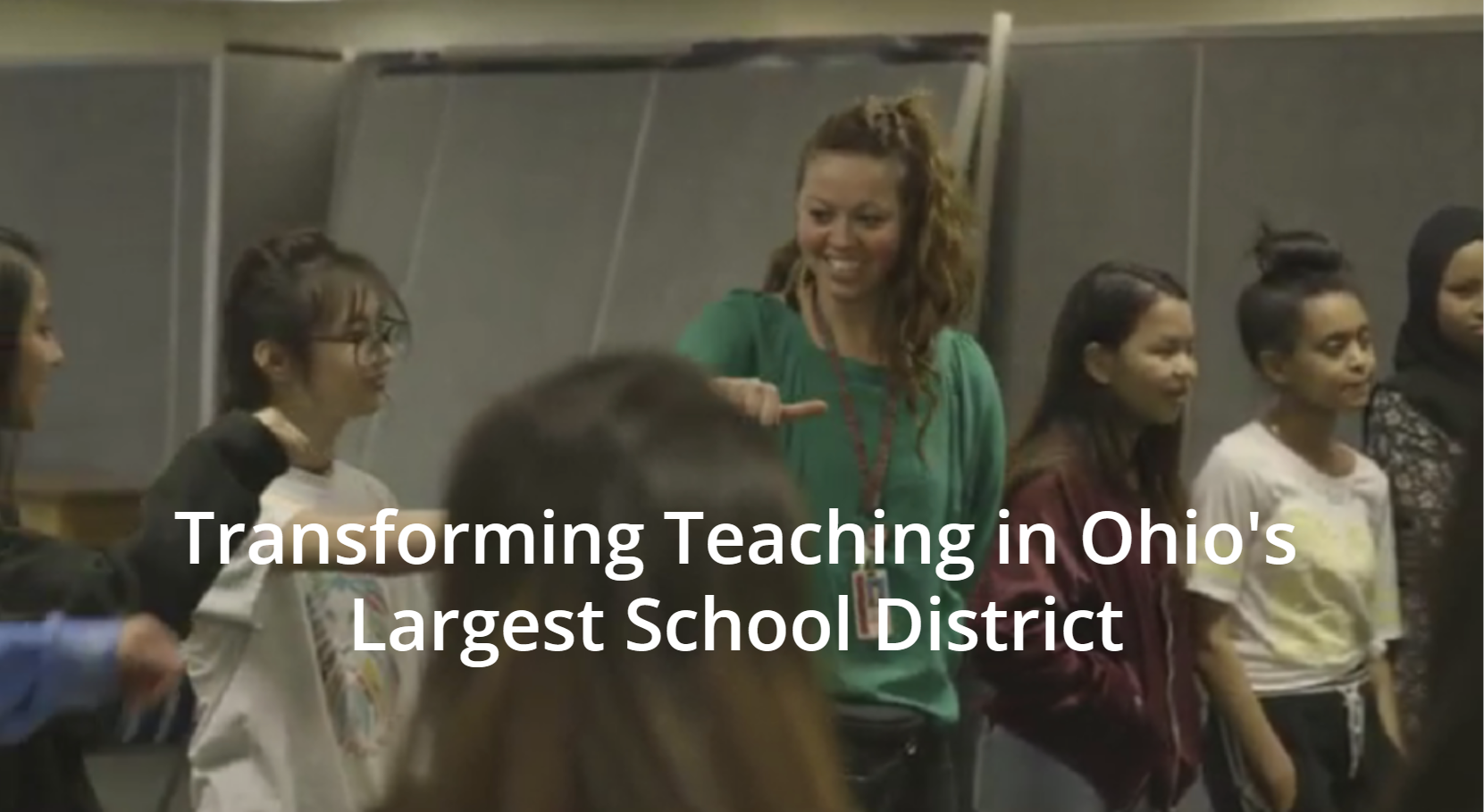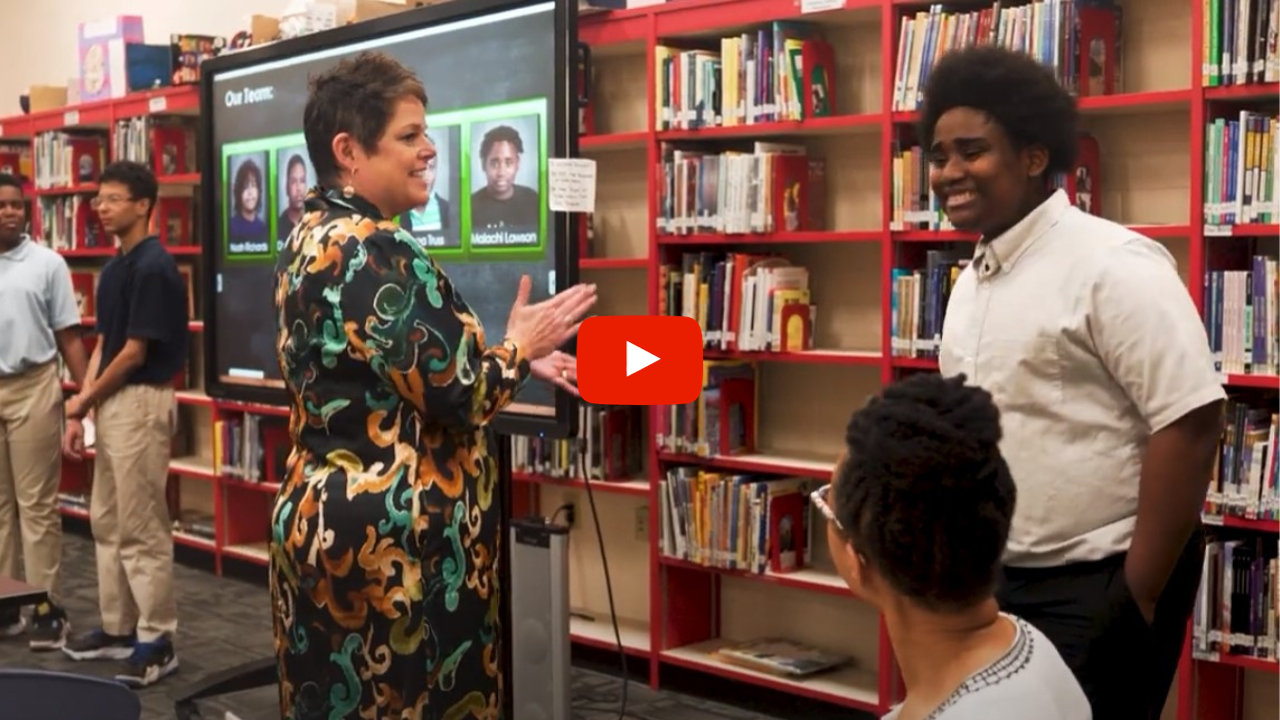In this episode, Doris Korda explains strategies for bringing real-world learning into the classroom without the use of guest speakers. She decries the use of trickery or external motivation to get students engaged in their own learning and highlights the value of working on urgent business problems as a way to master skills.
Alison Tanker: You talk all the time about the importance of using real business problems, real problems.
Doris Korda: Real problems, right.
Alison: I’m curious if you can dive into that a little bit more.
Doris: Oh, okay. That’s great, yeah. The easy thing to understand is that when you use real problems, whether it’s a history class, a science class, a technology coding class, or an entrepreneurship class, when students are working on something real, it’s relevant.
As a teacher, I learned early on when I was teaching math from the very beginning that the starting point had to be connecting each student to engage each student’s interest. The way you engage students’ interest is by having them understand and realize and discover, “Wow, this is really relevant to me and meaningful, and I want to know this.” Okay?
As John Dewey said, you don’t use trickery. You don’t need to use trickery. You don’t motivate students. Teachers think, “How do I motivate a student?” No, how do I find a way to have this student tap their own interest, and that will motivate them, right?
Alison: Mm-hmm.
Doris: So whether it’s a history class or whatever kind of class, when you start again with “What are the learning objectives here?” Whether it be the learning objective is problem solving or the learning objective is Chinese history, how do we structure the learning in the form of a real problem that each student will care deeply about?
Tons of different ways to do that, and every time I work with an educator, there’s a lot of conversation and questions I ask before . . . there isn’t a once size fits all approach. You wouldn’t, if you’re trying to teach Chinese history, look for real business problems.
You’d look for real things of other sorts so that along the way they will have to, in order to solve this problem they’re going to care deeply to solve. And that’s a very broad term. They’re going to have to learn Chinese history in order to solve it well.
So that’s where the expectations and how you set it up. So this isn’t a throw a problem in the room, leave, and come back three weeks later and see what they come up with, which is what I . . . I’ve talked to you about this, I get very frustrated as project-based learning becomes this growing movement that as with anything they’re all different flavors and there’s all different levels of quality, and I’m not suggesting one is better than the other, but if we’re going to really change the way school works, we’re not talking about making the learning less substantive or . . .
Alison: Or fun.
Doris: . . . having lower expectations. What we’re talking about is different learning.
The real problems do that. They’re the vehicle to, well, multiple vehicles, but it’s the number one way for the students to work on something that’s relevant and meaningful. So they’re all in.
It also is the best way for students really to develop those transformative skills and to learn knowledge, really hard stuff, learn how they learn really hard stuff best, because they have a goal, and they’re using all these things. They have to use these things in order to solve the problem they want to solve, in order to be successful.
The other thing they are going to have to learn, which is real world stuff, is they, almost immediately, when they connect and engage with “Wow, how am I going to actually solve this? Or how are we going to solve this?” They realize that once they’ve really understood what the problem is, once they’ve really understood what the problem is and why it matters, and what solving it might mean.
They immediately realize, “I’ve got to inventory what resources I have available to me to solve it.” They don’t have an answer with an example, okay? We’re not just changing the numbers. They don’t have a text that has everything in that chapter, you just have to memorize it, and then you’re good for the test. They’re solving a problem that is . . .
Alison: Pretty ambiguous and the CEO doesn’t . . .
Doris: Yeah, nuanced, complicated. We don’t know, like, “What do I even use to solve . . . ” not just techniques, but what information matters the problem is not that there isn’t enough information out there. It’s knowing which information matters most, when and how, right?
Alison: Absolutely.
Doris: So it’s kind of like, you know, I’ve been in schools for many, many years and there was the . . . it’s lesser now, but there was a stretch where it was all about using technology for technology’s sake. So “You, teacher, thou shalt use technology in your classroom.”
There was a time, right, when technology was fairly new and fairly new in schools. “Thou shalt use it, and tell us how you’re using it.” Of course, all these things are tools, right?
Alison: Right, absolutely.
Doris: And technology, as religion, is not the goal. The goal is “Here’s what we want the learning to be. How are you going to use technology to help in making that learning happen?” By the way, you can’t get away from it. Technology is the way to solve problems, right?
Alison: Mm-hmm.
Doris: It’s the vehicle for . . . so anyway, very quickly when students have internalized, “Okay, this is the problem. This is what we’re trying to solve, and it matters a lot to me to solve it.” They’re going to roll up their sleeves with their team mates and themselves and say, “Okay, what are the resources we have around us to solve it?”
There’s, of course, online research, and there are teachers you can go to and ask, “What should my next thing be?” And we are frustrating to them, because we don’t ask their questions, of course.
They’re looking at the resources, and the minute they start in to their researching, not just online research, they start realizing there are resources out there in the form of organizations and people who have information I need, to solve this problem.
As every one of us has experienced, right, there are different ways to get at that. They have to find out, “Who do I need to talk to most? What do I need to find out from them, and how do I get that?” So research and problem solving involve a lot of different organizations and people.
So what naturally happens, in solving a problem that is a real business problem, locally in Cleveland, the startup, is they are, before you know it, interacting all over the place with organizations and people throughout Cleveland and then throughout the country, and sometimes throughout the world, because they get to a place where, “Okay, I need to find out – Rustbelt Reclamation. I need to find out exactly what the process is for deciding which houses get demolished where there’s woodwork . . . I don’t know what it is. So they have to find stuff out that they can’t out from their textbook or from their teacher.
So one of the things that you notice when you come in and observe this program or any of the programs that we’ve done or any of the others we’ve worked with who develop their programs, is you can’t do this without the students inevitably making connections with their community, whatever that community is.
They learn crazy-powerful stuff from that. One of the things they learned, by the way, as an aside, is “How do you get someone to talk to you?” Okay? They experience what the rest of us experience. There’s somebody, “Boy, I’d really love to talk to that person. They’re the expert in this, and that is what I most need.”
They try everything they know how. We give them approaches and ideas how to get that person’s attention and get feedback, but we say, “You have a deadline. Assume you’re not going to hear back from them. Move on.”
Out of the crazy numbers of organizations and people they reach out to in the course of the three weeks of problem solving, there’s only a small fraction, a very small fraction in most cases, that they ever connect with. But those connections, when they make them, are crazy powerful learning experiences.
Or when they get themselves out of the building, because they actually go downtown to talk to someone in the community center, instead of sitting in the classroom . . . the four of them, we know this, right? Spending an hour theorizing . . .
Alison: Making assumptions.
Doris: Yeah, like, “Oh, I bet blah, blah . . . ” And what do we say? We say, “Why don’t instead of you guys, you four students who have no clue and no experience, sitting in and trying to act . . . like “Go talk to somebody.”
“But who do we talk . . . what if they don’t have time for us? Should we call them ahead? We tried to call, we got no answer.”
“Go down there.”
“Do you think there’s somebody maybe who will talk . . . ” You know? They learn these things.
We do things like bring people in when there’s something specific that’s important for the students to learn, and there’s somebody who we have in our little . . . we’ve built up over the years, an inventory of people who want to help support the students and the program.
Who will say, “Okay, I need you to do a workshop to teach students how to do valuation.” You saw Sam, and Sam is an expert at this. He gets that this isn’t him coming in and doing a lecture. He leads the students through something in an hour so that they start learning this stuff.
We have mentors in the final portion of the class that we assign to each team when they’re taking a problem they care about and building their own business model to solve it in the span of four weeks.
For that part of it only, we assign each team a mentor. That’s a very important thing for a lot of reasons, but one of the things that happens with that is they have this mentor, this mentor’s not an educator. It’s somebody out in the working world who has tons of experience working with businesses and startups.
When the students are trying to create a business model to solve a problem, and they’re coming up with something that’s absolutely crazy or laughable or they’re trying to figure out “Who do I even talk to?” The mentor is like, “Hey, that’s not going to work. Forget that.” And “Have you thought about asking so and so?”
It’s a slice, for those students, of interaction with someone very seasoned, out in the working world that they would never normally get, where they’re actually working on something together. They would never get that until they’re well out of college. It’s really eye-opening.
Now along the way, we’re working with the mentors, we do an orientation where we give them some boundaries, because just like yourself as an instructor, if the mentor goes in and solves it for them, it’s not helpful.
We also aren’t training them up to be full-on educators, so there’s a place and so we have to orient the mentors. At the same time, as you know, we’re also talking to the student teams when the mentors aren’t there about the fact that “Okay, you’re trying to build a business model to solve your problem. Nobody knows the right way to do it because it hasn’t been done before, and it’s your problem to solve.
“You now have not only your instructors who throw questions at you, guide you, whatever, you now have this mentor, and none of us know the right answer.”
So as I always say when they come into a team and they say, “Well, hey, will you help me?” or “Will you help us? Here’s what we’re thinking, what do you think?” I always say, “Okay, do you really want to hear what I think?”
“Yes, oh, yes. We really want to hear it.” And I’ll say, “All right, but I’m going to preface like I always do. I’m going to throw a bunch of stuff at you, a bunch of questions that are on my mind after hearing this. When I leave, you can consider every question I asked and think about it, and you are free to reject any of it.”
The same is true with a mentor. The mentor may say, “Actually, guys, I think that’s bunk. And here’s my question, what about this? Unless you process and agree, “Oh, based on what he or she said, yes, this is bunk, we should go the other route.”
If you process what he or she said, and you think, “No, actually we still don’t think it’s bunk. We still want to go that way and not this way.” That’s going to be up to you.
But the whole class, this is getting back to why we use real problems, is all about this stuff. They’re going to be using resources, they’re going to be connecting with their community. They’re going to be working in the course of the four or five months of this class with so many different people, from so many different worlds in so many different conversations with so many different perspectives. It’s eye-opening.
Talk about a way to have a student really develop a deep-rooted open-mindedness, a really deep-rooted understanding of the fact that in most of life there’s not a right and a wrong. In most of life, there isn’t, “Here’s the right answer to that, and you get 100%.” There are different perspectives.
When we, at the end of the class, talk about when you form your team, the first three problems, we set up their teams so that each student will be on entirely different teams. Teaming and collaboration is such a huge part of the curriculum in learning. We want them to have very different teams to have to deal with different personalities, different dynamics because it’s really important to their learning.
When we go into the final where they form their own teams, and we say to them, “All right, what matters to you when you’re thinking about forming your team?” They say, “I want really different people. I don’t need somebody who thinks like I do. I need somebody . . . ” Okay, we don’t use the word “diversity,” necessarily, we don’t hit it on the head explicitly. We don’t need to.
They have such an appreciation for how powerfully, hugely important it is, and actually critical to their success it is, that they have many different people with completely different strengths and different opinions and backgrounds, as part of their mix, whether on their team or that they’re talking to. They get that, and that is a huge part of the learning.
The other thing I wanted to say is you know I’ve worked with, and am working with, a lot of educators who aren’t at a Hawken. Someone who’s very remote, rural part of South Carolina, in a public school that’s no resources, the kids don’t have technology, they don’t have access to much technology.
They’re not in a city, they don’t have an alum community of successful businesses. You know what? They formed a program where in this case it is an entrepreneurship class. The teacher I’m working with has developed an entrepreneurship class where the students are working on real problems, and there are ways for her to construct those, to bring those in, to find those easily, that the students care deeply about.
There are ways, they will find a way, those students, to tap resources outside the school, to connect with resources outside the school. They will find a way, because they live in a world where technology allows everybody to do that. It’s crazy empowering. So they will find a way, and they do.
Some number of them have cell phones. Some number of them have, at home, a computer. There are some computers in the tech center . . . there’s always some way, and they connect with people externally. That’s a massively powerful part of the learning and the class and that all comes from real problems.







